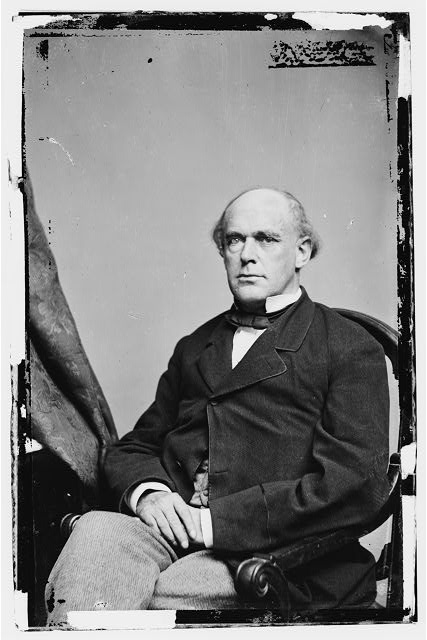Liberty Party
During the early spring of 1840, the Liberty Party emerged in upstate New York as a third party committed to confronting slavery more directly than the prevailing Whig and Democratic Parties. The party aligned chiefly with the evangelical church, and organized largely around the concept of “one idea” abolitionism: committing the party’s platform singularly to ending slavery or its expansion. Salmon P. Chase captured this sentiment when he coined the party’s slogan “the absolute and unconditional divorce of the government from slavery.” Unlike Garrisonian non-resistants, Liberty Party members believed the government had a legitimate authority to eliminate slavery. On a local level, party members might occasionally form coalitions with other reform efforts such as temperance, but on a national level the party devoted itself exclusively to slavery. The party experienced considerable success in Massachusetts where it claimed 9,997 votes in the 1846 gubernatorial election. In the Bay state, The Liberty Party gained its strongest support from rural evangelical clergy who E.D. Hudson often opposed.1
Merging evangelical clergy with political abolitionists, the Liberty Party celebrated the church and state, and directly defied the non-resistance beliefs of E.D. Hudson. Hudson believed the American government and church clergy facilitated the expansion of slavery. He thus perceived the Liberty Party as an enemy, not an ally.
In the back of his journal from 1840-41, Hudson drafted a letter condemning the upstart Liberty Party for its attachment to the political system.2 Later in 1843, Hudson traveled to the Kennebec Valley of Maine, where he encountered fierce support for the Liberty Party. Hudson wrote of the region "Thus it is here - those the most vehement for Liberty Party and voting are in full fellowship with slavery in the church and ministry."3During the trip, Hudson attended an anti-slavery meeting at a Methodist chapel where the minister agitated against Garrisonian abolition. Hudson wrote of the encounter "He was a Liberty Party man. So much alarm had been created against us for fear of the Liberty party, I tho't best to look after the "dear creature" and with a few little knocks demolished their premises - showing slavery not to be a creature of law, not abolished by law and public opinion. The slaveholder and not law. Liberty Party men observed next morning that their foundation was taken away without their being aware of what I was driving at - on the side of the oppressors was power, powers of public sentiment, the tyrant slave-holder."4 Hudson recognized that slaveholders created and controlled the American legal and political systems. He questioned the intentions of political abolitionists and rejected formal politics as a tool for delivering emancipation.
Citations
1. Bruce Laurie, Beyond Garrison: Antislavery and Social Reform (Cambridge: Cambridge University Press: 2005) 49-83
2. E.D. Hudson, Journal, E.D. Hudson, Journal, 1840-41. UMass SCUA, Hudson Family Papers 332: Box 1 Folder 12.
3. E.D. Hudson, Journal, 1842-43, pgs. 29-30. UMass SCUA, Hudson Family Papers 332: Box 2 Folder 37.
4. Ibid


